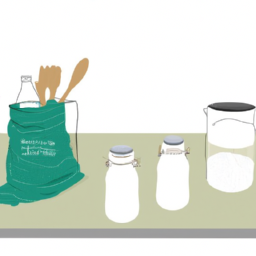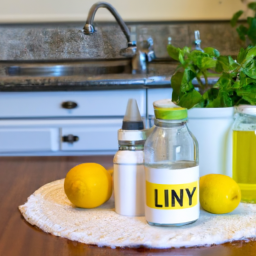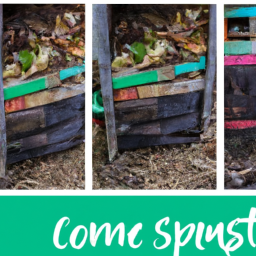Looking to make a positive impact on the environment without breaking the bank? You’ve come to the right place! In this article, we’ll show you how to be eco-friendly on a budget. From simple swaps for a greener lifestyle to thrifty ways to reduce waste, we’ve got you covered. Discover DIY eco-friendly cleaning products and sustainable fashion tips that won’t drain your wallet. Plus, learn budget-friendly tricks for energy efficiency. Get ready to go green without sacrificing your savings!
Simple Swaps for a Greener Lifestyle

If you’re looking to be more eco-friendly without breaking the bank, there are some simple swaps you can make for a greener lifestyle. One of the easiest ways to reduce waste and save money is by shopping for zero waste groceries. Start by bringing your own reusable bags to the grocery store instead of using single-use plastic ones. You can also invest in reusable produce bags and bulk containers, which will eliminate the need for plastic packaging. Another great option is to shop at local farmers markets or join a community-supported agriculture (CSA) program, where you can get fresh, organic produce without all the excess packaging.
When it comes to transportation, there are plenty of eco-friendly options that won’t break your budget. Instead of driving everywhere, consider walking or biking for short distances. Not only will this help reduce carbon emissions, but it’s also a great way to stay active and improve your health. If walking or biking isn’t possible, try carpooling or using public transportation whenever you can. Public transit systems are often more affordable than driving alone and can significantly reduce your carbon footprint.
DIY Eco-Friendly Cleaning Products

To make your own cleaning products, you can easily mix together common household ingredients. By doing this, you not only save money but also reduce your impact on the environment. Homemade skincare and eco-friendly laundry solutions are just a few examples of how you can take control of what goes into your cleaning products.
When it comes to skincare, many commercial products contain harmful chemicals that can be harsh on your skin and the environment. By making your own homemade skincare products, you can ensure that they are gentle and natural. Ingredients like coconut oil, honey, and essential oils can be used to create cleansers, moisturizers, and face masks that are both effective and eco-friendly.
In addition to skincare, making eco-friendly laundry detergent is another way to minimize waste and chemicals in your home. Simple ingredients such as baking soda, vinegar, and castile soap can be combined to create a powerful detergent that effectively cleans clothes without harming the environment.
Thrifty Ways to Reduce Waste

One easy way for you to reduce waste is by repurposing items instead of throwing them away. Not only does this help the environment, but it can also save you money. When it comes to reducing waste, a great place to start is with your grocery shopping. Consider adopting a zero waste approach by bringing your own reusable bags and containers to the store. This eliminates the need for single-use plastic bags and packaging. By buying in bulk, you can also reduce the amount of packaging waste generated.
Another thrifty way to reduce waste is through upcycling projects. Instead of tossing out old furniture or clothing, get creative and find new uses for them. For example, an old wooden ladder can be transformed into a stylish bookshelf or plant stand. Old t-shirts can be turned into reusable shopping bags or cleaning rags.
The key to reducing waste on a budget is to think creatively and look for opportunities to repurpose items that would otherwise end up in the trash bin. By incorporating zero waste grocery shopping practices and embracing upcycling projects, you can make a significant impact on reducing waste while saving money in the process.
Sustainable Fashion on a Shoestring Budget

When you’re on a tight budget, it’s possible to embrace sustainable fashion by shopping secondhand and choosing timeless pieces that can be worn for years. Thrift store finds are a great way to build a sustainable wardrobe without breaking the bank. Not only will you save money, but you’ll also be reducing the demand for new clothing production, which is one of the biggest contributors to environmental damage.
Thrift stores offer a wide range of options, from high-quality designer items to unique vintage pieces. By giving these pre-loved clothes a second chance, you’re contributing to the circular economy and reducing waste. Plus, shopping at thrift stores allows you to discover one-of-a-kind treasures that reflect your personal style.
If you want to take sustainability even further, consider upcycling projects. Upcycling involves transforming old or discarded garments into something new and exciting. You can turn an oversized shirt into a trendy crop top or repurpose old jeans into stylish shorts. The possibilities are endless!
Budget-Friendly Tips for Energy Efficiency

Embracing energy efficiency doesn’t have to be expensive; there are simple steps you can take to reduce your carbon footprint and save money on utility bills. One of the most effective ways to achieve energy efficiency is by investing in energy-saving appliances. These appliances are designed to consume less electricity while still providing the same level of performance. By replacing your old, inefficient appliances with new energy-saving ones, you can significantly reduce your energy consumption and lower your utility bills.
In addition to upgrading your appliances, another budget-friendly option for improving energy efficiency is by insulating your home properly. Good insulation helps to keep the temperature inside your home stable, reducing the need for excessive heating or cooling. While professional insulation installation can be costly, there are low-cost options available too. For example, weatherstripping doors and windows is a simple and inexpensive way to prevent drafts and improve insulation.
Another affordable option is using window films or coverings that reflect heat during summer months and retain warmth in the winter. Additionally, sealing gaps around pipes or outlets with caulk or foam can also make a significant difference in preventing air leakage.
Frequently Asked Questions
Are There Any Eco-Friendly Alternatives to Single-Use Plastics That I Can Easily Incorporate Into My Daily Routine?
Looking to reduce your use of single-use plastics? There are plenty of eco-friendly alternatives that you can easily incorporate into your daily routine. Consider switching to eco friendly kitchenware like reusable food storage containers and stainless steel straws. You can also opt for sustainable cleaning products that come in refillable containers or make your own using natural ingredients. By making these small changes, you can help protect the environment without breaking the bank.
What Are Some Simple Ways to Reduce Food Waste and Save Money at the Same Time?
To reduce food waste and save money, start by meal planning. This helps you buy only what you need and use up leftovers effectively. Another way is to invest in reusable products like food storage containers and cloth bags for shopping. These alternatives cut down on plastic waste and are more cost-effective in the long run. By being conscious about your choices, you can make a positive impact on the environment while also saving some extra cash.
Can You Provide Some Tips on How to Make My Own Natural Beauty and Personal Care Products at Home?
Looking for ways to be eco-friendly on a budget? Here are some tips for creating homemade cleaning products and making your own natural remedies. By making these products at home, you can reduce waste and save money. Plus, you’ll have control over the ingredients used, ensuring they’re safe and environmentally friendly. With a little research and experimentation, you can create effective and sustainable alternatives to store-bought beauty and personal care items. Start small, gather supplies, and enjoy the benefits of going green on a budget!
How Can I Shop for Sustainable Fashion on a Tight Budget?
When it comes to shopping for sustainable fashion on a tight budget, there are a few strategies you can use. First, look for sales and discounts offered by eco-friendly clothing brands. Second, consider buying second-hand or vintage clothes as they are often more affordable and still contribute to sustainable fashion trends. Lastly, try DIY projects like upcycling old clothing into something new and trendy. By being resourceful and mindful of your purchases, you can shop sustainably without breaking the bank.
What Are Some Budget-Friendly Ways to Make My Home More Energy-Efficient?
Looking to make your home more energy-efficient without breaking the bank? Start by considering energy-efficient lighting options like LED bulbs, which consume less electricity and last longer. Another budget-friendly way is to explore insulation alternatives such as weatherstripping or window film to reduce heat loss during colder months. These simple changes can help you save on your energy bills while also reducing your carbon footprint. It’s a win-win for both your wallet and the environment!
Conclusion
In conclusion, being eco-friendly doesn’t have to break the bank. By making simple swaps in your lifestyle, such as using reusable bags and water bottles, you can make a big difference without spending much money. DIY eco-friendly cleaning products are not only cost-effective but also better for your health and the environment. Finding thrifty ways to reduce waste, like composting or repurposing items, can save you money while helping the planet. And don’t forget about sustainable fashion on a shoestring budget – shopping secondhand or renting clothes is both affordable and environmentally friendly. Lastly, implementing budget-friendly tips for energy efficiency, such as turning off lights when not in use and insulating your home properly, can help lower your utility bills while reducing your carbon footprint. So why wait? Start making these small changes today and be an eco-warrior on a budget!